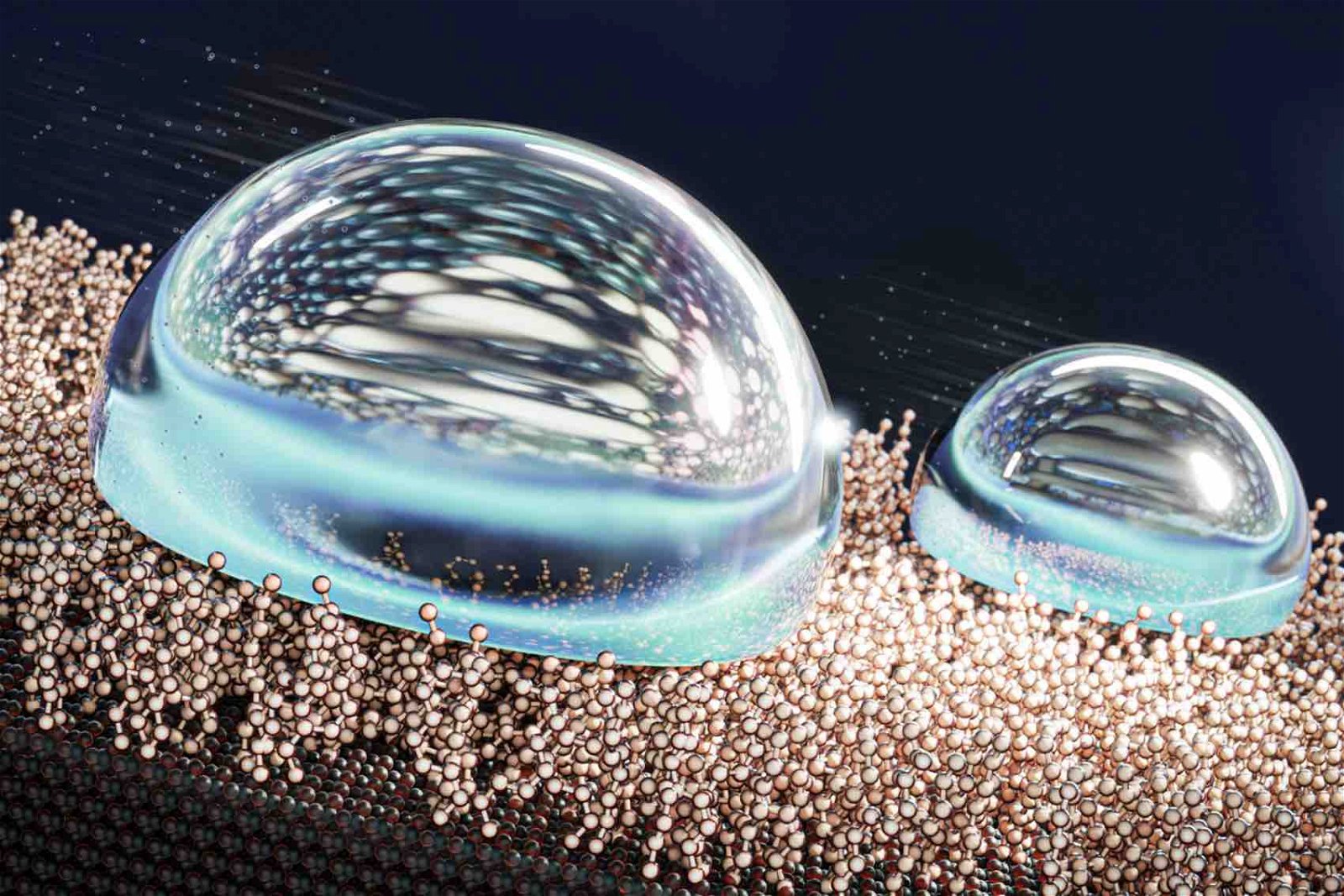A team of researchers says they have created the most water-repellent surface ever, challenging existing ideas about how friction works. Known as a self-assembled monolayer (SAM), the ingenious new surface, which is assembled at the molecular level, has the potential to impact hundreds of commercial and industrial applications, including de-icing techniques, maritime technologies, space exploration, and even ultra-slippery cookware.
The Most Water-Repellent Surface Ever is ‘Liquid-Like’
The Aalto University researchers behind the potentially groundbreaking discovery say their material is not a new type of liquid lubricant or an ultra-low friction surface but instead is a “liquid-like” surface that takes advantage of the properties of liquid and solid materials. That’s because, unlike liquids or solid surfaces, liquid-like surfaces “have molecular layers that are highly mobile yet covalently tethered to the substrate, giving solid surfaces a liquid-like quality that acts like a layer of lubricant between the water droplets and the surface itself.”
Tapping into their previous research, the team created their liquid-like surface by coaxing it into assembling itself over the targeted material, a silicon substrate. One key advantage of assembling the liquid-like surface at the molecular level is how it allows for highly accurate tuning of the thickness and distribution of the SAM, a level of control previously unavailable.
“Our work is the first time that anyone has gone directly to the nanometer-level to create molecularly heterogeneous surfaces,” says doctoral researcher Sakari Lepikko, lead author of the study. And as they had hoped, the resulting SAM is the most water-repellent surface ever made. Also notable, their slippery surface is best either thick or thin, with both offering more slipperiness than in-between levels of coverage.
“The results showed more slipperiness when SAM coverage was low or high, which are also the situations when the surface is most homogeneous,” explained Aalto Professor Robin Ras. “At low coverage, the silicon surface is the most prevalent component, and at high, SAMs are the most prevalent.”
This means a thin yet transient layer of their super slippery SAM could be applied when a temporary slipperiness is needed, like de-fogging a window or de-icing an airplane wing. Conversely, long-term industrial applications or ones that employ microfluidics, like medicinal applications, may require thicker layers that take longer to dissolve.
Perhaps most surprisingly, the researchers say that water was always believed to create a film over the surface at low coverage, reducing its hydrophobic ability to reduce friction. Instead, their result challenges the current ideas on how friction works in these situations.
“We found that, instead, water flows freely between the molecules of the SAM at low SAM coverage, sliding off the surface,” said Lepikko. “And when the SAM coverage is high, the water stays on top of the SAM and slides off just as easily. It’s only in between these two states that water adheres to the SAMs and sticks to the surface.”
There Are Hundreds of Possible Applications for Liquid-Like SAMs
The Aalto University researchers note that hundreds of potential applications exist for the most water-repellent surface ever made, including some that affect people’s everyday lives.
“Things like heat transfer in pipes, de-icing, and anti-fogging are potential uses,” Lepikko says. “It will also help with microfluidics, where tiny droplets need to be moved around smoothly, and with creating self-cleaning surfaces. Our counterintuitive mechanism is a new way to increase droplet mobility anywhere it’s needed.”
After publishing their findings in Nature Chemistry, the team continues to perfect their technique. Among the first goals is addressing the transient nature of their ultra-thin layers that will likely need to last longer for some of the most promising applications.
“The main issue with a SAM coating is that it’s very thin, and so it disperses easily after physical contact,” Lepikko explained. “But studying them gives us fundamental scientific knowledge which we can use to create durable, practical applications.”
Christopher Plain is a Science Fiction and Fantasy novelist and Head Science Writer at The Debrief. Follow and connect with him on X, learn about his books at plainfiction.com, or email him directly at christopher@thedebrief.org.

